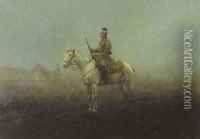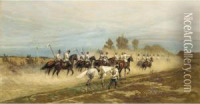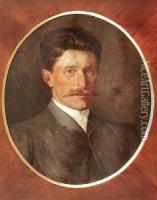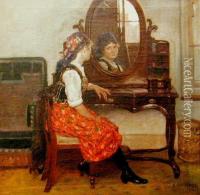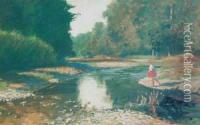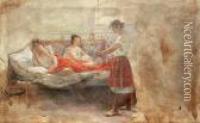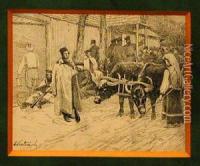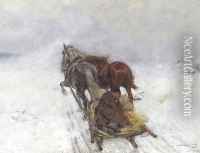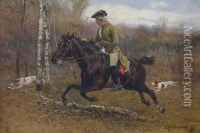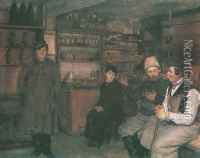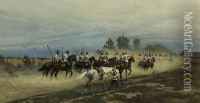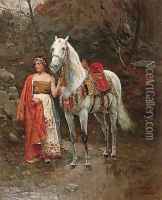Antoni Piotrowski Paintings
Antoni Piotrowski was a notable Polish Romantic painter who gained fame for his unique style and contributions to the art world during the late 19th and early 20th centuries. Born on January 14, 1853, in Markowice, Poland, Piotrowski showed an early inclination towards painting and the arts. He started his formal education at the Kraków School of Fine Arts, where he studied under the tutelage of prominent artists such as Jan Matejko.
After completing his studies in Kraków, Piotrowski traveled to Vienna and later to Munich, where he continued to develop his skills. Munich, at that time, was a hub for artists and intellectuals, and Piotrowski was greatly influenced by the works of other European painters. His style evolved to incorporate the elements of Romanticism, which was characterized by an emphasis on emotion, individualism, and a fascination with nature and history.
Piotrowski's work is often noted for its dramatic intensity and vivid portrayal of historical scenes and figures. He had a particular interest in the history of Poland and the struggles of its people, which is reflected in many of his paintings. His art not only captured the essence of Polish nationalism but also conveyed the broader human experience through powerful imagery and poignant narratives.
One of Piotrowski's most recognized works is the 'Battle of Grunwald', which depicts the legendary 1410 battle between the Polish-Lithuanian forces and the Teutonic Knights. This painting, like many of his others, showcases his ability to recreate historical events with accuracy and emotional depth.
Throughout his life, Piotrowski was an active participant in the artistic communities of the places he lived and worked. He exhibited his paintings in various European cities, receiving accolades and recognition for his contributions to the Romantic movement in art.
Antoni Piotrowski's legacy as an artist is marked by his dedication to the portrayal of his homeland's past and the human condition. His works continue to inspire and resonate with audiences for their historical significance and artistic beauty. Piotrowski passed away on February 4, 1924, in Radom, leaving behind a rich portfolio of art that continues to be celebrated in Poland and beyond.
